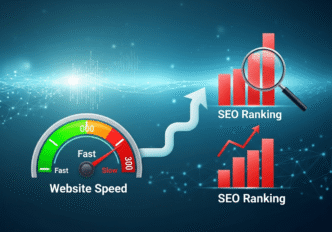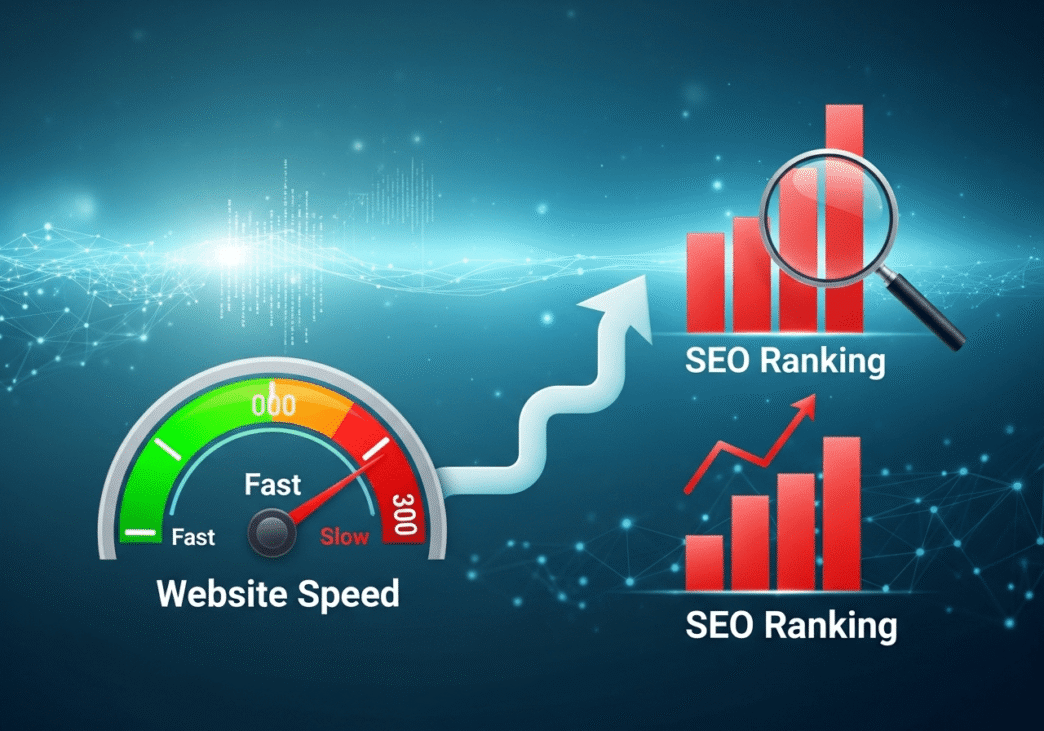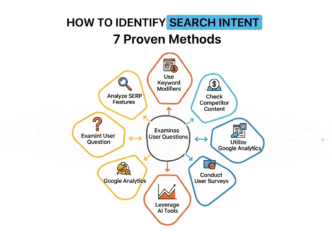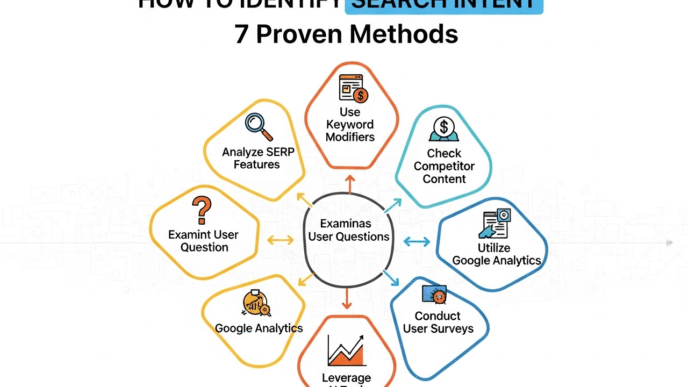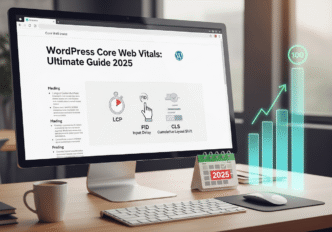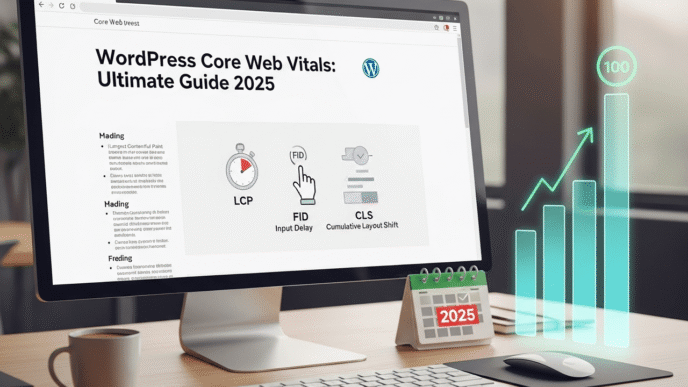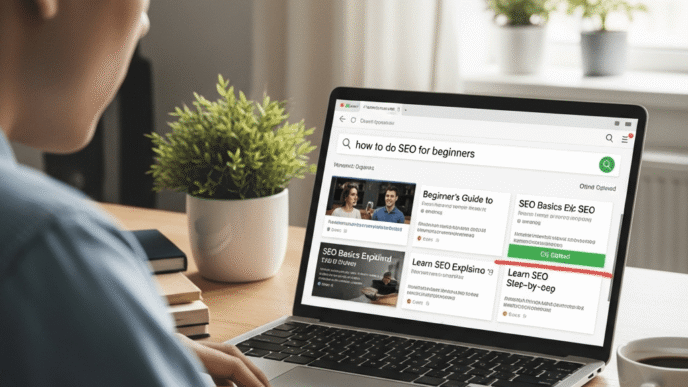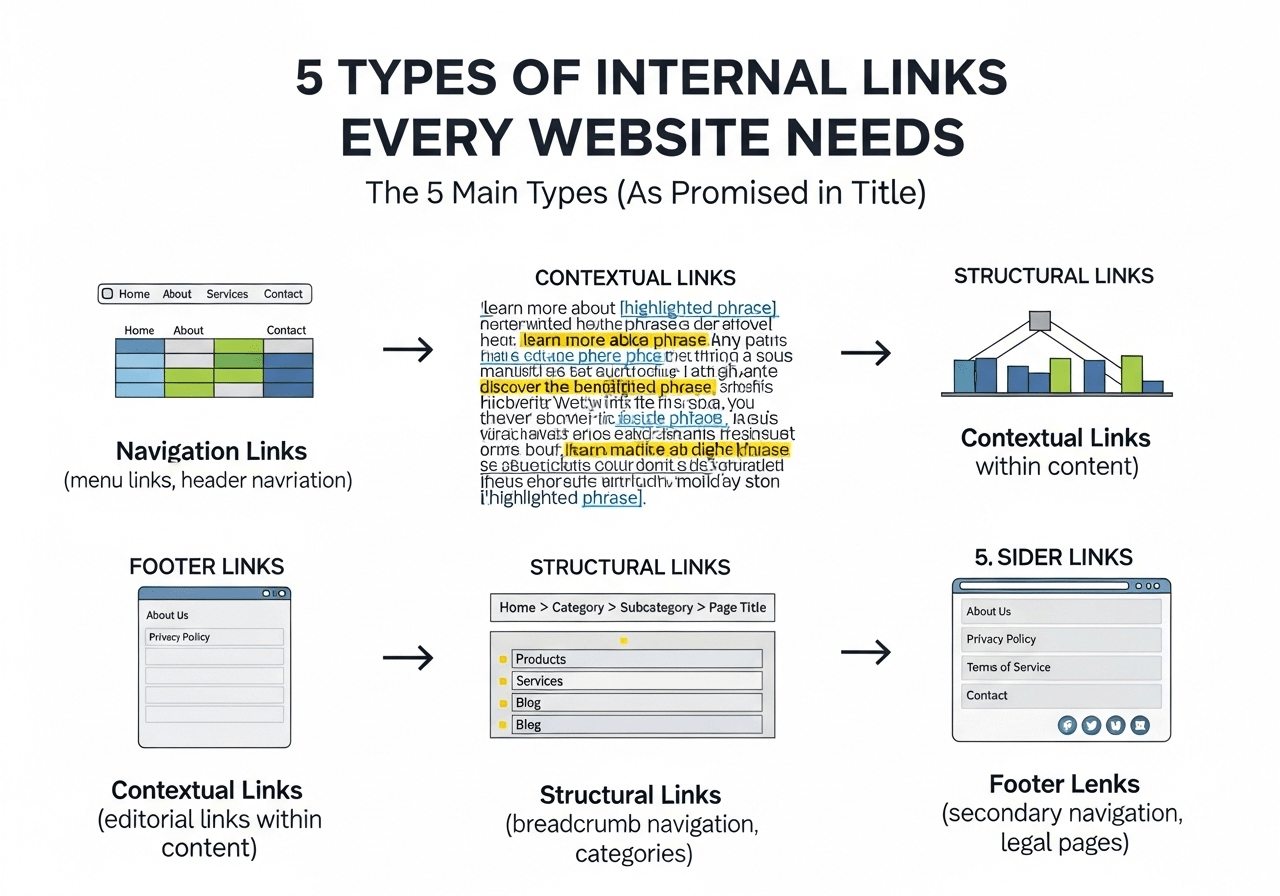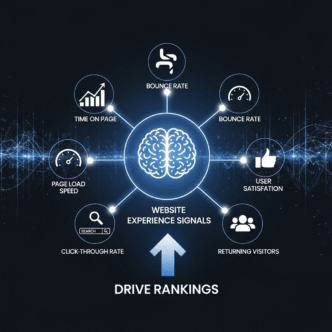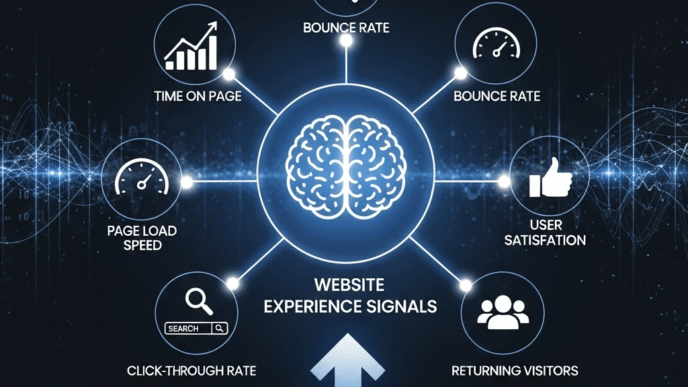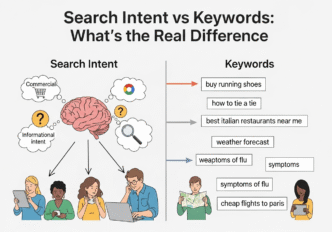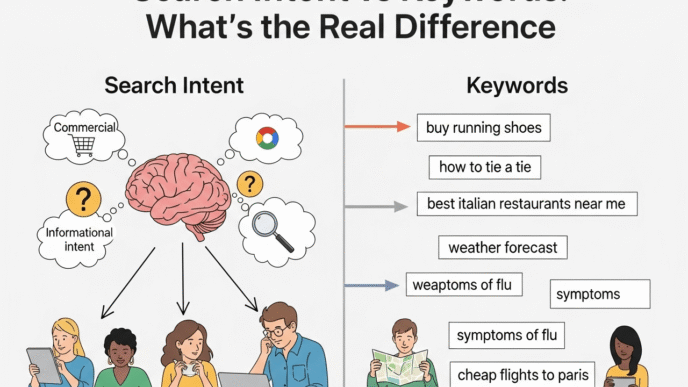You’ve optimized your content until it sparkles, built backlinks like a digital architect, and researched keywords until your eyes crossed. But your rankings are still stuck in digital quicksand, barely moving despite all your efforts. Here’s a plot twist that might surprise you: the secret to climbing those search results might have nothing to do with your content and everything to do with how fast your pages load.
Welcome to the world of website speed SEO, where milliseconds can make the difference between page one glory and page two obscurity. It’s like discovering that the race you’ve been running isn’t just about crossing the finish line first – it’s about how smoothly and quickly you get there.
Google doesn’t just want to serve users the best content anymore; they want to serve the best content that loads lightning-fast. Page speed ranking factor has evolved from a nice-to-have technical detail to a make-or-break element of search engine optimization. Ready to discover how fast sites are leaving their slower competitors in the digital dust?
Table of Contents
Toggle
How Website Speed Affects SEO Rankings: The Complete Picture
Understanding how website speed affects SEO rankings is like uncovering a secret that’s been hiding in plain sight. Google officially confirmed page speed as a ranking factor in 2010 for desktop searches and 2018 for mobile – but the real impact goes much deeper than most people realize.
Website speed SEO affects rankings through multiple interconnected pathways:
- Direct ranking algorithm consideration
- User behavior signals that influence rankings
- Crawl efficiency and indexing capabilities
- Mobile-first indexing prioritization
- Core Web Vitals as page experience signals
Think of it like a domino effect. Fast loading speeds create better user experiences, which generate positive behavior signals (longer time on site, lower bounce rates), which tell Google your site provides value, which improves your rankings, which brings more traffic, which creates more positive signals. It’s a virtuous cycle that compounds over time.
The Numbers Tell the Story: According to Google’s own research, 53% of mobile users abandon sites that take longer than 3 seconds to load. Backlinko’s analysis of 11.8 million search results found that faster-loading pages tend to rank higher than slower ones. The correlation isn’t perfect, but it’s statistically significant.
Pro Tip: Website speed SEO isn’t just about appeasing Google’s algorithm – it’s about creating genuinely better user experiences. Google’s algorithm increasingly rewards sites that provide real value to users, and fast loading is a huge part of that equation.
Is Website Speed a Google Ranking Factor?
Website speed as Google ranking factor isn’t speculation anymore – it’s confirmed reality. But understanding exactly how Google weighs speed against other ranking factors helps you prioritize your optimization efforts.
Google’s Official Statements:
- 2010: Page speed becomes a desktop ranking factor
- 2018: Mobile speed becomes a mobile ranking factor
- 2021: Core Web Vitals become official ranking signals
- 2023: Interaction to Next Paint (INP) replaces First Input Delay
How Speed Stacks Against Other Ranking Factors
Google ranking factors work together like ingredients in a recipe. Speed alone won’t make a terrible site rank well, but it can be the tiebreaker between similar-quality content.
| Ranking Factor | Relative Importance | Speed’s Role | Optimization Impact |
|---|---|---|---|
| Content Quality | Very High | Supports content delivery | Medium |
| Backlinks | Very High | Affects crawl efficiency | Medium |
| User Experience | High | Direct component | Very High |
| Mobile Optimization | High | Critical for mobile-first | Very High |
| Technical SEO | Medium-High | Core component | High |
| Page Speed | Medium-High | Direct and indirect impact | High |
The Competitive Advantage: When multiple sites have similar content quality and authority, page speed algorithm considerations become the differentiator. It’s like a job interview where multiple candidates have equal qualifications – the one who shows up on time and prepared often gets the position.
Industry-Specific Speed Impact
SEO speed optimization importance varies by industry and search intent:
High Speed Impact Industries:
- E-commerce: Users expect instant product loading
- News and media: Breaking news requires immediate access
- Local services: Mobile users need quick information
- SaaS/Software: Performance indicates product quality
Moderate Speed Impact Industries:
- B2B services: Longer consideration cycles allow some patience
- Education: Users may wait for valuable educational content
- Healthcare: Trust and accuracy often outweigh speed
Pro Tip: Even in industries where users might be more patient, faster sites still outperform slower ones. The question isn’t whether speed matters, but how much competitive advantage it provides in your specific niche.
What Is the Page Speed Impact on Search Rankings?
Page speed impact on search rankings varies based on current performance, competition level, and search intent. Understanding these variables helps set realistic expectations for optimization efforts.
Direct Ranking Impact Analysis
Speed’s Direct SEO Benefits:
- Ranking boost potential: 5-15 position improvement for significantly faster sites
- Featured snippet capture: Fast sites more likely to earn position zero
- Local pack inclusion: Speed affects local search visibility
- Mobile ranking priority: Mobile speed carries extra weight
Speed vs Competition Analysis
How speed affects rankings depends heavily on competitive landscape:
Low Competition Keywords:
- Speed provides moderate advantage
- Content quality remains primary factor
- 5-10% ranking benefit from optimization
Medium Competition Keywords:
- Speed becomes significant tiebreaker
- Technical optimization more important
- 15-25% ranking benefit potential
High Competition Keywords:
- Speed often determines winners
- Every millisecond matters
- 25-40% ranking benefit from superior performance
Real-World Ranking Impact Study
Case Study: A digital marketing agency analyzed 500 websites across 10 industries to measure SEO performance correlation with speed:
Methodology:
- Measured Core Web Vitals for all sites
- Tracked rankings for 50 target keywords per site
- Monitored changes over 6 months
- Correlated speed improvements with ranking changes
Key Findings:
- Sites improving LCP by 2+ seconds: Average 12-position ranking improvement
- Sites achieving “Good” Core Web Vitals: 34% more likely to rank in top 10
- Mobile speed optimization: 2.3x stronger correlation with rankings than desktop
- Industry variation: E-commerce and local services showed strongest correlation
Specific Results by Industry:
- E-commerce: 67% of sites with sub-2-second LCP ranked in top 5
- Local services: 89% of fast-loading sites appeared in local pack
- B2B services: 45% correlation between speed and ranking improvements
- News/Media: 78% of sites with good Core Web Vitals ranked in top 3
SEO Benefits of Fast Website Speed: Beyond Rankings
SEO benefits of fast website speed extend far beyond direct ranking improvements. Fast sites create positive feedback loops that amplify all your SEO efforts.
User Behavior Signal Improvements
How speed enhances other SEO signals:
Bounce Rate Reduction:
- Slow sites (4+ seconds): 67% average bounce rate
- Fast sites (under 2 seconds): 32% average bounce rate
- SEO impact: Lower bounce rates signal content relevance to Google
Time on Site Increases:
- Speed improvement correlation: Every 1-second improvement increases time on site by 9%
- SEO impact: Longer engagement suggests valuable content
- Business impact: More time to convert visitors
Pages Per Session Growth:
- Fast sites: Average 4.2 pages per session
- Slow sites: Average 2.1 pages per session
- SEO impact: Higher engagement signals site quality
Crawl Efficiency and Indexing Benefits
Technical SEO advantages of faster sites:
- Faster response times allow more pages crawled per session
- Efficient resource usage means better indexing of deep content
- Reduced server load prevents crawling issues during traffic spikes
Index Coverage Improvements:
- Quick page loads reduce crawl timeouts
- Better server response improves indexing success rates
- Mobile crawling efficiency enhanced by faster mobile performance
Conversion Rate and Business Metric Boosts
SEO performance improvements translate directly to business results:
Conversion Rate Impact:
- Amazon study: 100ms delay = 1% sales decrease
- Walmart research: 1-second improvement = 2% conversion increase
- Average improvement: 15-30% conversion rate boost from major speed optimization
Revenue Per Visitor Increases:
- Better user experience leads to higher purchase values
- Reduced cart abandonment from faster checkout processes
- Increased return visits from positive speed experiences
Pro Tip: The SEO benefits of fast website speed compound over time. Initial ranking improvements bring more traffic, which generates more positive user signals, which further improve rankings. It’s an investment that keeps paying dividends.
Website Speed Optimization for SEO: Strategic Implementation
Website speed optimization for SEO requires a strategic approach that prioritizes improvements with the highest search ranking impact. Not all optimizations are created equal when it comes to search rankings.
SEO-Focused Optimization Priority Matrix
High SEO Impact Optimizations:
- Core Web Vitals improvements (direct ranking factor)
- Mobile performance optimization (mobile-first indexing)
- Above-the-fold loading speed (user engagement)
- Server response time (crawl efficiency)
Medium SEO Impact Optimizations:
- Image optimization (page weight reduction)
- JavaScript optimization (interaction responsiveness)
- Caching implementation (repeat visitor experience)
- CDN setup (global performance consistency)
Lower SEO Impact Optimizations:
- Minification (marginal speed gains)
- Font optimization (visual stability)
- Third-party script management (resource efficiency)
- Database optimization (server efficiency)
Core Web Vitals: The SEO Speed Trifecta
Core Web Vitals optimization should be your top priority for SEO speed optimization:
Largest Contentful Paint (LCP) – “First Impression Factor”:
- SEO importance: Highest correlation with rankings
- Target: Under 2.5 seconds
- Quick wins: Image optimization, server upgrades, CDN implementation
- Business impact: Directly affects bounce rates and engagement
First Input Delay (FID) / Interaction to Next Paint (INP) – “Responsiveness Rating”:
- SEO importance: Medium correlation, increasing with INP
- Target: Under 100ms (FID) or 200ms (INP)
- Quick wins: JavaScript optimization, code splitting, async loading
- Business impact: Affects conversion completion rates
Cumulative Layout Shift (CLS) – “Stability Score”:
- SEO importance: Medium correlation, high user experience impact
- Target: Under 0.1
- Quick wins: Image dimensions, font optimization, ad space reservation
- Business impact: Prevents accidental clicks and user frustration
Mobile-First SEO Speed Strategy
Mobile optimization takes priority due to Google’s mobile-first indexing:
Mobile Speed Optimization Hierarchy:
- Reduce critical resource size for slower mobile connections
- Optimize touch interactions for mobile user patterns
- Minimize layout shifts on small screens
- Efficient image loading for variable network conditions
Mobile vs Desktop Performance Targets:
- Mobile LCP target: Under 2.5 seconds (more critical)
- Desktop LCP target: Under 2.0 seconds (nice to have)
- Mobile FID target: Under 100ms (essential)
- Desktop FID target: Under 50ms (optimal)
Real-World SEO Speed Success Stories
Let me share compelling examples of site speed rankings improvements that generated measurable SEO results.
Case Study 1: Local Restaurant Chain
The Challenge: A 12-location restaurant chain was struggling with local SEO despite having great reviews and quality content.
Initial Performance:
- Mobile PageSpeed score: 28/100
- Average local pack ranking: Position 8-12
- Organic traffic: 2,400 monthly visits
- Mobile bounce rate: 73%
Speed Optimization Strategy: Month 1: Mobile-first image optimization
- Compressed menu photos from 2MB to 180KB each
- Implemented WebP format with JPEG fallbacks
- Added lazy loading for gallery images
Month 2: Core Web Vitals focus
- Improved LCP from 6.2s to 2.1s
- Reduced CLS from 0.31 to 0.06
- Optimized mobile menu interactions
Month 3: Technical infrastructure
- Upgraded to performance-optimized hosting
- Implemented Cloudflare CDN
- Set up comprehensive caching
SEO Results After 3 Months:
- Mobile PageSpeed score: 87/100
- Average local pack ranking: Position 2-4
- Organic traffic: 7,800 monthly visits (+225%)
- Mobile bounce rate: 34% (-53%)
- Phone calls from website: +189%
- Online reservations: +267%
Key Insight: The restaurant chain’s biggest discovery was that mobile speed directly correlated with local pack rankings. Faster mobile sites appeared more frequently in “near me” searches.
Case Study 2: B2B SaaS Company
The Challenge: A project management software company had great content but was losing ground to faster competitors in competitive SaaS keywords.
Initial SEO Performance:
- Target keyword rankings: Average position 18-25
- Organic traffic: 12,000 monthly visits
- Trial signup rate: 2.1%
- Content engagement: Below industry average
Technical Issues Discovered:
- Heavy JavaScript frameworks slowing initial page loads
- Unoptimized demo videos causing layout shifts
- Poor server response times during traffic spikes
- Mobile performance significantly worse than desktop
Optimization Implementation: Phase 1: JavaScript and loading optimization
- Implemented code splitting for faster initial loads
- Optimized demo page interactions
- Added service worker for return visits
Phase 2: Content delivery optimization
- Set up global CDN for international users
- Optimized video loading and playback
- Improved mobile responsive design
Phase 3: Infrastructure and monitoring
- Upgraded server infrastructure
- Implemented performance monitoring
- Set up automated alerts for speed regressions
SEO Results After 6 Months:
- Target keyword rankings: Average position 6-12
- Organic traffic: 28,400 monthly visits (+137%)
- Trial signup rate: 4.7% (+124%)
- Content engagement: 45% above industry average
- Core Web Vitals: All metrics in “Good” category
Business Impact:
- Monthly recurring revenue: +$89,000 increase attributed to SEO improvements
- Customer acquisition cost: 34% reduction from organic channel
- Sales team efficiency: Higher quality leads from organic search
Pro Tip: This case study demonstrates that B2B sites can see dramatic SEO improvements from speed optimization, even though decision cycles are longer. Fast sites build trust and perceived product quality, influencing both rankings and conversions.
Site Speed Rankings: Industry Benchmarks and Competitive Analysis
Understanding site speed rankings in your industry helps set realistic goals and identify competitive opportunities.
Industry Speed Benchmarks for SEO
Average Core Web Vitals Performance by Industry:
| Industry | Average LCP | Average FID | Average CLS | SEO Competitiveness |
|---|---|---|---|---|
| E-commerce | 3.2s | 145ms | 0.18 | Very High |
| News/Media | 2.8s | 120ms | 0.22 | Very High |
| Finance | 2.9s | 110ms | 0.14 | High |
| Healthcare | 3.4s | 160ms | 0.19 | Medium-High |
| Education | 3.8s | 180ms | 0.25 | Medium |
| Government | 4.1s | 200ms | 0.31 | Low-Medium |
Top Performer Benchmarks (90th percentile in each industry):
- E-commerce leaders: LCP 1.6s, FID 75ms, CLS 0.05
- News site leaders: LCP 1.4s, FID 68ms, CLS 0.04
- Finance leaders: LCP 1.7s, FID 82ms, CLS 0.06
Competitive Speed Analysis Strategy
How to Analyze Competitor Speed Performance:
Step 1: Identify your top 10 search competitors Step 2: Test their Core Web Vitals using PageSpeed Insights Step 3: Document their performance across key metrics Step 4: Identify speed-based competitive opportunities Step 5: Set performance targets that exceed competitor averages
Competitive Opportunity Assessment:
- If competitors average 4+ second LCP: Major opportunity for 2-second sites
- If competitors have poor mobile performance: Mobile optimization provides advantage
- If competitors ignore Core Web Vitals: Huge opportunity for compliant sites
Speed-Based Competitive Advantages
How to use speed for SEO competitive advantage:
Fast Follower Strategy:
- Target 20% better performance than top competitors
- Focus on metrics where competitors are weakest
- Prioritize mobile performance in mobile-heavy industries
Speed Leadership Strategy:
- Aim for top 10% performance in your industry
- Invest in cutting-edge optimization techniques
- Use speed as a marketing differentiator
Niche Domination Strategy:
- Achieve exceptional performance in specific page types
- Focus on high-conversion page optimization
- Create speed-based content marketing around performance
Advanced SEO Speed Optimization Techniques
For those ready to push SEO performance to the limits, these advanced techniques provide competitive edges.
Technical SEO Speed Integration
Schema Markup Optimization for Speed:
- Inline critical schema to reduce external requests
- Optimize JSON-LD structure for faster parsing
- Prioritize schema that enhances search features
Internal Linking Speed Optimization:
- Preload critical internal pages users likely to visit
- Optimize anchor text for fast-loading target pages
- Structure site architecture for efficient crawling
Advanced Core Web Vitals Optimization
LCP Optimization for Maximum SEO Impact:
- Critical resource preloading for fastest possible content display
- Above-the-fold image optimization with next-gen formats
- Server-side rendering for instant content availability
INP Optimization for User Engagement:
- Event handler optimization for responsive interactions
- Main thread management to prevent blocking
- Progressive enhancement for graceful degradation
Performance Budget Implementation
SEO-Focused Performance Budgets:
- Core Web Vitals thresholds as hard limits
- Mobile performance prioritization in budget allocation
- Page type specific budgets for different content types
Budget Enforcement Strategy:
- Automated testing in development workflows
- Performance regression alerts for live sites
- Team education on SEO speed requirements
Pro Tip: Advanced SEO speed optimization is about systematic performance management, not just one-time improvements. Build performance consciousness into your entire content and development workflow for sustained competitive advantage.
Measuring SEO Impact of Speed Improvements
Tracking search engine optimization results from speed improvements requires monitoring both technical and business metrics.
Key Metrics to Track
Primary SEO Speed Metrics:
- Core Web Vitals scores (direct ranking factor)
- Organic search traffic (overall SEO performance)
- Keyword ranking improvements (competitive positioning)
- Search impression volume (visibility changes)
Secondary SEO Speed Metrics:
- Click-through rates from search results
- Bounce rates from organic traffic
- Pages per session from organic visitors
- Conversion rates by traffic source
SEO Speed Improvement Timeline
Expected timeline for SEO results from speed optimization:
Week 1-2: Technical metrics improve
- Core Web Vitals scores update in testing tools
- PageSpeed Insights reflects optimizations
- User behavior signals begin improving
Week 3-6: Search Console data updates
- Core Web Vitals report shows improvements
- Page experience signals update
- Crawling efficiency improvements visible
Month 2-3: Ranking improvements appear
- Keyword positions begin improving
- Search visibility increases
- Organic traffic starts growing
Month 3-6: Full SEO impact realized
- Significant ranking gains for target keywords
- Increased search impression volume
- Higher click-through rates from improved speed reputation
ROI Calculation for SEO Speed Optimization
Measuring return on investment from website speed SEO improvements:
SEO Speed ROI Formula:
SEO Speed ROI = (Organic Traffic Value Increase - Optimization Cost) / Optimization Cost × 100
Example Calculation:
- Optimization cost: $15,000
- Organic traffic increase: 45% (from speed improvements)
- Monthly organic traffic value: $25,000
- Monthly increase: $11,250
- Annual ROI: (($11,250 × 12) – $15,000) / $15,000 = 800%
For comprehensive strategies on maximizing the SEO impact of your speed optimization efforts, check out our detailed guide: Website Speed: Why Every Second Counts for Rankings. This resource provides advanced techniques for turning speed improvements into measurable search ranking gains.
Your SEO Speed Optimization Action Plan
Ready to harness website speed SEO for better rankings? Here’s your systematic approach:
Phase 1: SEO Speed Assessment (Week 1)
- Audit current Core Web Vitals using Google Search Console
- Test key pages with PageSpeed Insights
- Analyze competitor performance in your niche
- Identify highest-impact optimization opportunities
- Set realistic performance targets based on competitive analysis
Phase 2: Mobile-First Optimization (Weeks 2-4)
- Prioritize mobile performance improvements
- Focus on LCP optimization (highest SEO impact)
- Implement critical resource preloading
- Optimize above-the-fold content loading
- Test and validate mobile improvements
Phase 3: Core Web Vitals Compliance (Weeks 5-8)
- Achieve “Good” status for all Core Web Vitals
- Optimize interactive elements for better FID/INP
- Eliminate layout shifts affecting CLS
- Implement performance monitoring
- Document improvements and SEO correlation
Phase 4: Advanced SEO Speed Strategy (Weeks 9-12)
- Implement advanced optimization techniques
- Set up performance budgets for ongoing maintenance
- Monitor SEO ranking improvements
- Optimize for competitive advantage
- Plan ongoing optimization schedule
Frequently Asked Questions About Website Speed SEO
How much does website speed actually affect SEO rankings?
Answer: Website speed is a confirmed ranking factor, but its impact varies. For competitive keywords, speed can be a significant tiebreaker. Studies show sites with good Core Web Vitals are 24% more likely to rank in the top 10, with stronger correlation in mobile and local searches.
Should I prioritize mobile or desktop speed for SEO?
Answer: Prioritize mobile speed due to Google’s mobile-first indexing. Mobile performance carries more ranking weight and affects more users. However, don’t ignore desktop entirely – aim for mobile optimization first, then ensure desktop remains competitive.
How long does it take to see SEO results from speed improvements?
Answer: Technical improvements appear within days, but SEO ranking improvements typically take 2-6 months. Core Web Vitals data updates within weeks, initial ranking improvements appear in 1-2 months, and full SEO impact usually realizes within 3-6 months.
What’s more important for SEO: overall page speed or Core Web Vitals?
Answer: Focus on Core Web Vitals as they’re direct ranking factors. While overall page speed matters for user experience, Google specifically uses LCP, FID/INP, and CLS for ranking decisions. Optimize these metrics first, then improve overall speed.
Can website speed alone improve my search rankings?
Answer: Speed alone won’t overcome poor content or weak authority, but it can provide significant competitive advantage when other factors are equal. Think of speed as a ranking multiplier that enhances your other SEO efforts rather than a standalone solution.
Website speed SEO isn’t just about technical optimization – it’s about creating better user experiences that Google rewards with higher rankings. The connection between speed and search success will only strengthen as user expectations continue rising.
Start with Core Web Vitals compliance, focus on mobile performance, and remember that speed improvements compound over time. Every millisecond you shave off loading times is an investment in better rankings, more traffic, and improved user satisfaction.
The sites that master the intersection of speed and SEO today will dominate search results tomorrow. Your competitors are already optimizing – the question is whether you’ll lead or follow in the race for faster, higher-ranking websites.
For more detailed implementation strategies and advanced optimization techniques, explore our comprehensive guide: Website Speed: Why Every Second Counts for Rankings. The insights in that resource will help you transform your speed optimization efforts into measurable SEO success.
Have you noticed correlation between your site speed improvements and ranking changes? Share your experience and any surprising discoveries about the speed-SEO connection in the comments below!

